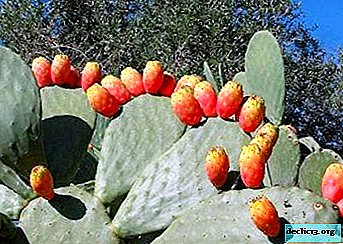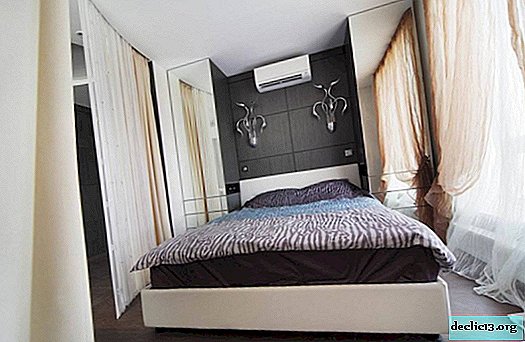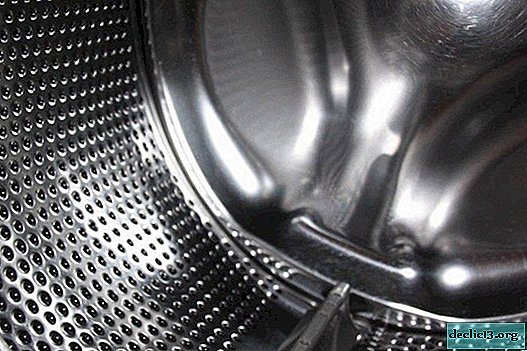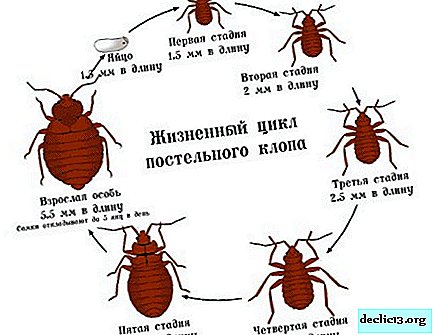Miniature Spathiphyllum Strauss: flower description and rules of care
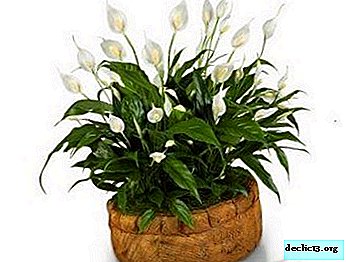
Hybrid Spathiphyllum Strauss - a miniature modest flower, elegant and aristocratic, it is ideal for the design of offices, personal accounts and other official institutions.
This flower requires certain conditions of care, reproduction, so that it can grow and bloom.
Thus, you will learn from the article how this flower and its sub-species look, learn the rules for caring for it, and methods for controlling pests and diseases.
A brief definition of this type
Spathiphyllum Strauss - a dwarf hybrid of the Aroid family spathiphyllum. Natural varieties grow in Central and South America, in New Guinea and in the Philippines. Habitat - swamp forests, sea coasts, river valleys and lakes.
Detailed description
Spathiphyllum Strauss is a perennial evergreen. Dwarf flower, adult flower height - 30 cm.
The leaves are dark green, narrow, oblong, wavy slightly. The structure of the leaves is leathery, pointed at the apex. Leaves are marked by a longitudinal central vein and lateral veins located in parallel.
There is no stem, basal rosette - a bunch is formed from basal leaves. Petioles are long, forked to half. Flower - the bedspread is long, curved, larger in size than the inflorescence. Inflorescence is pale yellow, has the shape of an ear. Seeds are smooth, small. The root is short.
History of occurrence
Natural varieties, there are more than 40 species. The first descriptions of this exotics were noted more than 100 years ago. In the middle of the 20th century. The result of selection was the hybrid species of unpretentious spathiphyllum, which are successfully bred as a decorative indoor flower.
Reference! Spathiphyllum Strauss bred in the 70s of the 20th century. in Alsmere, in the Netherlands.What is the difference from the rest of the species?
The flowering is discreet, restrained, but the main feature is the bright green of the curly leaves, which retain freshness all year round, subject to proper care. Spathiphyllum Strauss - unpretentious, requires a minimum of effort and attention.
Subcort
Variegated

This rare variety of spathiphyllum is called Adorable. The height of the flower is 40 - 50 cm. The leaves are large, wide, light green, have a light longitudinal strip - a vein in the center of the leaf. It has a special aroma that manifests itself in the early morning hours. The root is small.
Chopin

A short evergreen hybrid variety of indoor spathiphyllum. The height of the adult flower is 30 - 40 cm. The leaves are shiny, bright green, oblong, characterized by depressed veins on the leaf plate.
Leaf with a pointed top. The inflorescence is yellow, covered by the flower itself - the sail. Perianth white, curved, with a pointed end. Has a delicate aroma.
A more detailed description, photos and secrets of growing Chopin variety can be found here.
Bloom
When and how?
A feature of flowering - can bloom 2 times. The first time blooms in May, the duration of flowering is 3 to 4 weeks.
The second time can bloom in late autumn - early winter, subject to competent care, necessary fertilizers, additional artificial lighting.Care before and after
It is not recommended to feed Spathiphyllum Strauss during flowering - it is possible to reduce flowering. During vegetative ripening and flowering, the pots should be in a bright place, the substrate should be regularly moistened.
After flowering, the petiole is cut off at the very base. You can divide the bush and transplant the flower only after flowering - at the end of June.
What to do if it does not bloom?
- An uncomfortable pot slows down flowering - Spathiphyllum Strauss loves a compact root arrangement.
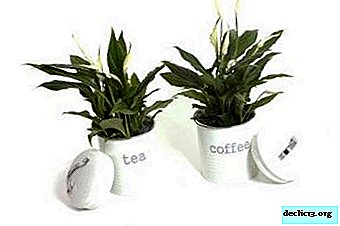 If you keep the flower in a shaded room, inflorescences do not form, you should change the location of the pots. In winter, it is advisable to use phyto lamps for additional lighting.
If you keep the flower in a shaded room, inflorescences do not form, you should change the location of the pots. In winter, it is advisable to use phyto lamps for additional lighting.- With waterlogging, the severity of the soil, flowering is difficult.
- If irrigation is irregular, the root dries up, development and flowering slows down.
- Also a serious danger to flowering are various viral and fungal infections and ticks, flower treatment is required.
Home care: step-by-step instructions
Seat selection
Spathiphyllum Strauss loves bright but indirect light. If the flowers are located on the south side, you need to shade the windows with a light curtain or white loose paper. Strong rays can cause leaf burns.
Important: with a lack of light, flower stalks do not ripen, flowering slows down. In autumn and winter, artificial lighting should be added for 3 to 4 hours.What should be the soil?
The soil for Strauss spathiphyllum should not be heavy and marshy. Soil composition:
- Horse peat - 3 hours
- Garden land - 2 hours
- Perlite - 2 hours
- Sand - 1 hour
- The drainage layer is pebbles or expanded clay.
The composition of the substrate should be fertile; fallen pine needles, leaves, compost, charcoal, medium pieces of bark, and crushed brick are usually added to the mixture.
Landing
Landing is recommended in early spring or after flowering, in the summer. The landing process is simple, consistent:
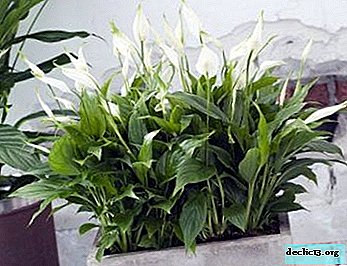 Soak the substrate in an old pot.
Soak the substrate in an old pot.- Carefully remove the flower from the old pot.
- The lateral processes separate, clean the root from dry and damaged processes.
- Spread drainage with a layer of 2 - 2.5 cm.
- Pour 4 - 5 cm of freshly prepared substrate.
- Install the landing part along with the old earthen lump.
- Empty spaces are filled with soil, slightly rammed with a special spatula.
- In order for the soil to settle, a small watering is required.
- For rooting, spraying the leaves with an epin solution is required (2 - 3 drops per glass of water).
- Watering is stopped for 1 to 2 days, sprayed daily.
Temperature
Spathiphyllum Strauss does not tolerate drafts and cold. If the windowsill is cold, foam padding is required. The optimum temperature for the development of the variety is 22 -25 ° C.
Do not allow temperature drops to 10 -12 ° C. In the heat, cooling spraying of the flower 2 times a day is required. The limit of summer temperature is 30 - 32 ° С.
Watering
The main condition for the care of Strauss spathiphyllum is regular abundant watering. In summer, you should spray the flower every day. Leaves are cleaned with a damp sponge from dust every week.
Water for irrigation take only purified or rain at room temperature. In winter, watering is reduced, watering should be as the soil dries.
Tip: It is advisable to drain the water in the pan immediately after watering, so as not to overmoisten the roots.Top dressing
 Before flowering for Spathiphyllum Strauss use potash - phosphoric fertilizers, 1:1.
Before flowering for Spathiphyllum Strauss use potash - phosphoric fertilizers, 1:1.
At home, you can fertilize the substrate with organic fertilizers. To maintain the tone of the leaves require nitrogen top dressing.
In the spring, you can feed any mineral fertilizer in the ratio of 1 - 2 g per 1 liter of water.
Young flowers are fed 1 time in 2 - 3 weeks. An adult flower is enough to fertilize once a month. In winter, feeding is reduced. Liquid fertilizers should be added when spraying bushes. Fertilizers should be alternated to avoid getting used to them.
Pruning
In case of infection with fungi and infections, Spathiphyllum Strauss should be cleaned of diseased areas, sprinkled with coal sections. After flowering, the peduncle is cut, dry leaves are removed. When transplanting, the root is cleaned - dry and rot-infected roots are removed.
Transfer
Young Strauss spathiphyllum is transplanted every spring or summer, when the pot has become small for the root system. A five-year-old flower is transplanted as necessary - the roots germinate through the drainage holes of the pot. Transplant soil composition:
- Peat - 3 hours
- Humus - 2 hours
- Leaf land - 2 hours
- Coarse sand - 1 hour.
- Bone meal -1 h.
At the bottom of the pot, gravel is poured, the renewed seedling is carefully placed, covered with the prepared mixture, well watered.
Attention: It is worth updating the substrate of the top layer of the pot.Breeding
 Reproduction is usually carried out during transplantation - every spring for the first 5 years, then, if necessary, when the root has grown too much. Spathiphyllum Strauss breeds by dividing the mother bush:
Reproduction is usually carried out during transplantation - every spring for the first 5 years, then, if necessary, when the root has grown too much. Spathiphyllum Strauss breeds by dividing the mother bush:
- Take out a flower from an old pot.
- The lateral processes along with the roots are carefully separated.
- Separated parts are planted in small containers for rooting.
On a new seedling should remain 2 - 3 leaf sockets.
Diseases and Pests
- Spider mite - a dangerous pest for the miniature Strauss cultivar. He eats leaf juice. Leaves turn pale. Fight should be sprayed with acaricides, the most harmless - fitoverm. It is necessary to process the flower 3-4 times with an interval of 5-6 days.
- Scutellum and powdery worm affects the sinuses of the leaves, especially in hot weather or with stagnant indoor air. Spraying with fozalon or karbofos will save. Re-processing is carried out after 7 days. For prevention, treatment is repeated 2 times.
- Thrips. These small pests can settle on the outer and inner sides of the leaves, white marks appear - lesions. White dry stripes appear on the leaves, then the leaves turn black. The leaves should be treated with confidor or actar. The procedure is repeated 2 to 3 times every 10 days.
Prevention of various problems
- The moisture-loving Spathiphyllum Strauss does not tolerate drought - the leaves begin to dry. It is necessary to intensify watering and add spraying from the spray gun. Perhaps the air is too dry, you need to arrange the containers with water near the pots, you can install pots on pallets with wet expanded clay.
- In the autumn-winter period, it is necessary to reduce the dose of fertilizers, from excessive feeding, the leaves become covered with brown spots.
- If after flowering the leaves turn yellow - the flower is weak, it is better to intensify watering, add organic or complex mineral fertilizers, cut off the faded flower stalk.
The modest and sophisticated Spathiphyllum Strauss organically looks in any home, office and office, is distinguished by sophistication and aristocracy among indoor decorative flowers.

 If you keep the flower in a shaded room, inflorescences do not form, you should change the location of the pots. In winter, it is advisable to use phyto lamps for additional lighting.
If you keep the flower in a shaded room, inflorescences do not form, you should change the location of the pots. In winter, it is advisable to use phyto lamps for additional lighting. Soak the substrate in an old pot.
Soak the substrate in an old pot.


